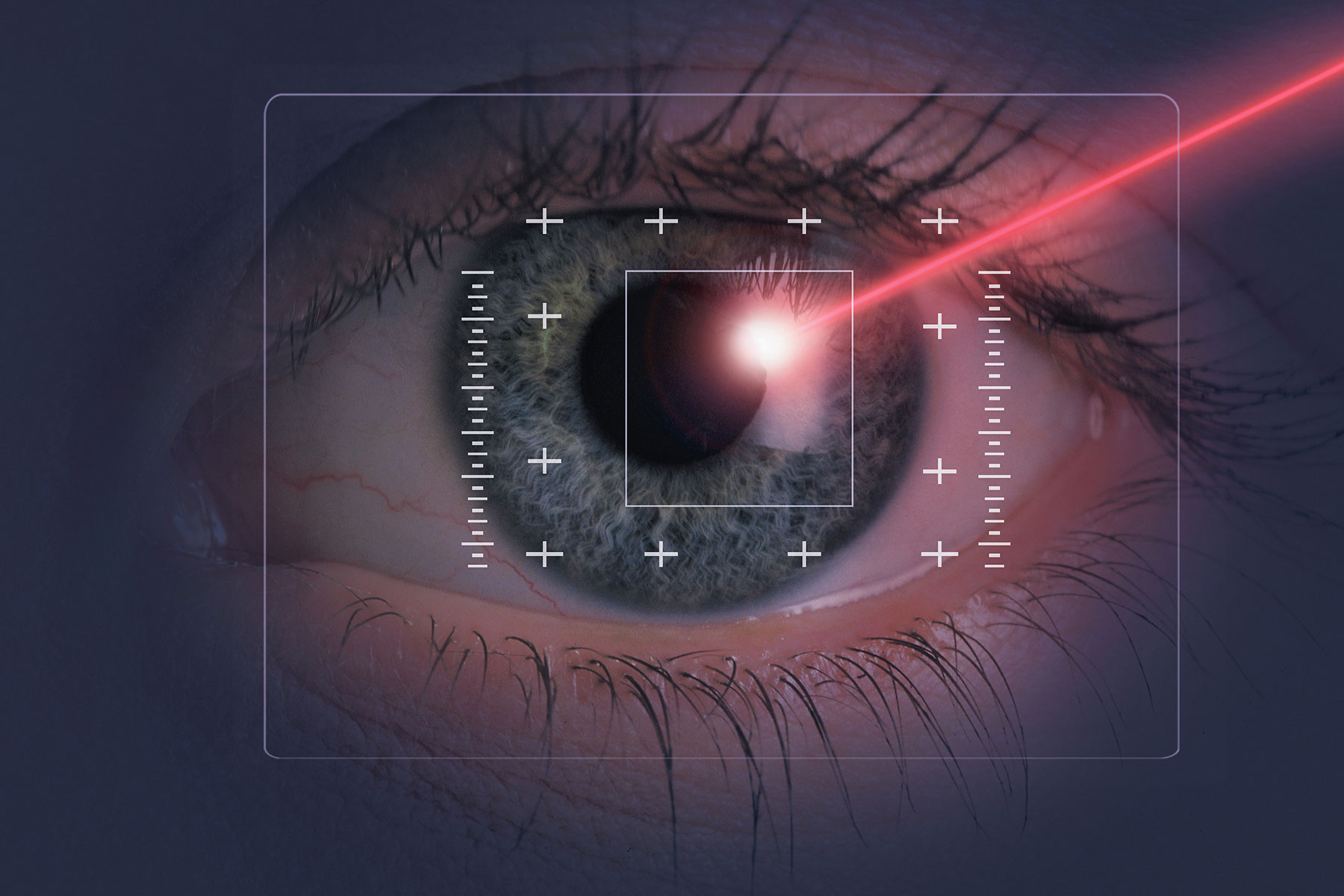A New Era of Minimally Invasive Glaucoma Treatments Has Arrived

For most patients with glaucoma, the use of eye drops to reduce pressure within the eye and prevent the silent but significant loss of peripheral vision is a way of life.
When drops don’t keep pressure within a safe range, other laser treatments and surgery may be more effective. Some of these have a long history, while others are very new.
Selective Laser Trabeculoplasty (SLT) is a laser procedure for open-angle glaucoma. After one use, it lowers eye pressure by about 30 percent. During an in-office SLT procedure, experts use a laser beam applied through a special contact lens to the drainage system of the eye to open it up for better outflow of fluid from the eye. SLT has been in use for more than 25 years around the world. If it is effective, it will generally last between 1-5 years, and in some cases, longer. When effects wear off, it can be repeated but with less lowering of pressure than the first time. The laser does not affect the success of other types of treatment.
“When drops don’t lower intraocular pressure (IOP) enough, SLT is an appropriate next step. Some of the newer treatments out there, like stents, are appropriate when we need only a moderate reduction in IOP and when cataract surgery is also being done”, says Dr. Sarah Wellik, a cataract and glaucoma specialist with the Bascom-Palmer Eye Institute and University of Miami Miller School of Medicine.
If the eye pressure can’t be maintained at a safe level by non-surgical means or SLT, there are several surgical options.
“While there is still a role for traditional glaucoma surgeries such as aqueous shunts and trabeculectomies, there are now many more options available depending on the patient’s glaucoma type, severity and goals,” notes Dr. Adam Rothman, a cataract and glaucoma specialist with the Bascom Palmer Eye Institute
- Micro stents: The iStent is placed in the trabecular meshwork, or drainage system of the eye, at the end of cataract surgery to increase outflow of fluid and lower eye pressure. Alternatively, the Hydrus micro-stent can be threaded into trabecular meshwork and serve as a scaffolding to hold the drain open and lower eye pressure.
- Trabeculotomy: A trabeculotomy is another minimally invasive glaucoma surgery that can be performed either following cataract surgery or as a stand-alone surgery. This procedure involves opening the trabecular meshwork drain with an incision. There are several variations in how to perform this surgery. The Kahook Dual Blade is one tool that allows the surgeon to cut out the sick drainage system. The Omni device can both remove the drainage system and flush the downstream drains.
- Sub-conjunctival stents: Another type of minimally invasive glaucoma surgery involves placing a tiny stent that allows flow of eye fluid from the inside of the eye to underneath the conjunctiva, or the white part of the eye that serves as “skin” for the eye. This forms a bleb, or bubble of fluid that hides underneath the eyelid. The XEN gel stent lowers eye pressure in this manner.
- Aqueous shunts are devices that are used to reduce eye pressure by inserting a small tube to drain the fluid from inside the eye to a bleb behind the eyelid, where it can’t be seen. The fluid is then slowly reabsorbed into the body through the eye’s blood vessels. This procedure is effective in about 80 percent of the cases to the point that eye drops can be stopped or greatly reduced to keep IOP controlled.
- Trabeculectomy: This surgery creates a new drainage pathway for the fluid to flow from the inside of the eye to a new bleb without the use of any artificial implant. This surgery can often achieve eye pressures as low as the single digits and greatly reduce the number of required eye drops.
Mary Jo Blackwood, RN, MPH, is a contributing writer for UMiami Health News. Based in St. Louis, MO, and Colorado, she has written medical articles and webpages for consumer publications and major university health centers.
Originally published on: February 05, 2019
Tags: aqueous or tube shunts, Dr. Anna Junk, Dr. Sarah Wellik, iStents, open-angle glaucoma, selective laser trabeculoplasty, SLT, trabeculectomy
